I’d like to start this post with an open letter to two dear friends of mine, with whom my relationship of late has begun to go sour:
Dear Garlic and Onions,
We used to be such good friends. What’s happened between us? When we get together now, it all starts off so nicely—you smell and taste so wonderful—but then it’s like you turn into those awful frenemy girls—after I leave the table, you grow nasty and hateful, causing me pain after being so sweet to my face, just moments before. Is it me? Are we growing apart as I age? Could we really be just friends of my youth, doomed to that awkward waving across the room and small talk at parties, taking each other’s company in small doses? I’d hate that. I hope our relationship will mend itself one day soon. I’ll always be…
Yours adoringly,

Because of this newly strained relationship, I find myself cutting back on the amount of onions I put into a dish, particularly when it seems like a recipe asks for an astonishingly large amount. (I seem to have a stronger, more immediate reaction to onions than I do to garlic. And that’s enough sharing about my internal issues, I think.) This makes following savory recipes to the letter particularly difficult for me.
For the Freekeh Pilaf from Plenty: Vibrant Recipes from London’s Ottolenghi by Yotam Ottolenghi, the recipe calls for two whole “medium” onions. The dish serves “2 to 4” so that’s at least half an onion per person. Yikes. I really didn’t want to go for it, but my decision to do these CBTB posts and stick to the recipes has led me to embrace—and enjoy—flavors I normally would have cut out; here, the onions were to be sautéed for a lengthy amount of time—maybe I’ve been afraid of onions all this time when cooking them down first might solve the problem.
Reminder: Cooking From the Book posts are meant to be companions to the original recipe, not a substitute. As long as the book is still in print, I won’t be copying the recipe here for you. See here for why.
Before You Start (Regarding Ingredients)
Freekeh — It’s the namesake ingredient of this dish, and the recipe introduction acknowledges that you very well may not be able to find it:
Throughout the Middle East it is common to process young and green durum wheat into freekeh. This is done by literally burning the wheat head in order to scorch the chaff and thus to assist removing the grain. The result is lightly charred green grains with a wonderful smoky aroma, which are often used like rice or bulgur wheat. Freekeh isn’t easy to find but you should come across it in Middle Eastern grocery shops. Or you can use bulgur as a substitute.
Since I’m not even sure if we have a Middle Eastern grocery shop here, bulgur wheat it was. I felt like this wasn’t cheating the “Cooking From the Book” rules since the substitution was approved in the recipe. Right??!
Other than the freekeh, everything else was simple to get. Definitely required a trip to the Whole Foods bulk bins, though, since bulgur wheat and pine nuts weren’t something I was going to buy a whole container of just for the small amounts needed for the recipe.
I even stuck to the vegetarian version, using some bottled concentrated Williams-Sonoma vegetable stock. (The recipe notes do say that traditionally freekeh is prepared with chicken or mutton stock, but the book is ostensibly vegetarian, although it suggests serving many dishes with meat, so it directs the use of vegetable stock.)
The Process
This one’s another easy-to-make dish. I know I keep saying that Plenty isn’t really a cookbook for beginners, and yet the two recipes I’ve posted about so far have been simple to make. I say it’s best as an inspiration not because it’s a difficult cookbook, but because the instructions aren’t as precise as they could be to help a kitchen novice.
You should be aware, though, that it does take some time to caramelize the onions nicely. You can’t rush the process.
The Results
Shake really liked this dish. I was a little surprised; I wasn’t sure if he’d go for it. He also really liked the onions, and enthused about the flavor they imparted. (I guess I’ve been depriving him of full-on onion-y flavors because of my anti-onion stomach.) I served it as a side, with fish marinated in Garlic Olive Oil and Cara Cara Orange/Vanilla White Balsamic Vinegar from Island Olive Oil Company, but it certainly would make a perfectly satisfying vegetarian main course.
A few hours later, I really regretted the two whole onions, but the flavor was quite nice. I’d definitely make this again, just with fewer onions. (So that answered my question over whether slow-cooking the onions first might help mellow out my reaction—big fat “no” to that.)
The Verdict
Should I try this recipe? Sure, as long as you don’t have the same love-hate relationship with onions that I have. (Or, just cut back, as I will in the future.) It’s also a good recipe to try if you’re looking to step outside the rice and pasta box, something I’ve been interested in doing. (Plenty has a whole chapter on grains, as well as recipes throughout the book that make use of non-Western-traditional starches.)
Difficulty: 1 out of 5
Should I buy the book? If you want to expand your horizons, absolutely. Plenty has plenty of recipes that use vegetables, grains and spices that are considered “exotic” in the American diet. Some of the ingredients are hard to find, and you’ll probably want to start with trips to your local Whole Foods or natural/health foods store, where they have a big selection of bulk bins so you don’t have to commit to large quantities of the grains, nuts and beans used in these recipes before you decide if you’ll keep making these dishes.
You should definitely trust your gut, though, and deviate from the written recipes if you feel they call for too much of something (oil, onions(!), yogurt — Ottolenghi really likes to pile the yogurt on to finish off a lot of these dishes) or not enough (seasonings, herbs, stock).
Plenty: Vibrant Recipes from London’s Ottolenghi
by Yotam Ottolenghi
Retail List Price: $35.00
288 pages, padded hardcover
Chronicle Books; American edition (March 2011)
ISBN: 978-1452101248







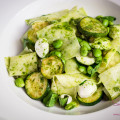
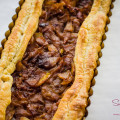
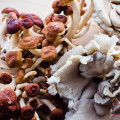

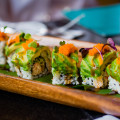
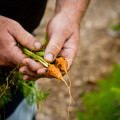
Leave a Comment